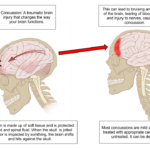Understanding Carpal Tunnel Syndrome: Causes, Symptoms, and Treatment
Carpal tunnel syndrome is a condition characterized by the compression of the median nerve in the wrist, leading to symptoms such as numbness, tingling, or weakness in the wrist or hand. This compression occurs due to narrowing of the carpal tunnel, often resulting from swelling or inflammation of the tendons passing through it. Understanding the causes, symptoms, and treatment options for carpal tunnel syndrome is essential for effective management and prevention.
What is Carpal Tunnel Syndrome?
The carpal tunnel is a narrow passageway in the wrist that houses the median nerve, along with other tendons and nerves of the hand and fingers. When the median nerve becomes compressed or irritated, it can lead to symptoms such as numbness, tingling, or weakness in the affected hand or wrist.
Causes and Risk Factors
Carpal tunnel syndrome can be caused by various factors, including:
- Repetitive Movements: Activities involving repetitive wrist and finger flexion or forceful hand movements, such as typing or assembly line work, can contribute to the development of carpal tunnel syndrome.
- Hormonal Changes: Hormonal changes, such as those occurring during pregnancy, can increase the risk of carpal tunnel syndrome.
- Age: The risk of developing carpal tunnel syndrome tends to increase with age, as the tissues in the wrist may degenerate over time.
- Medical Conditions: Certain medical conditions, such as arthritis or diabetes, can contribute to joint swelling and compression of the median nerve.
Symptoms of Carpal Tunnel Syndrome
Common symptoms of carpal tunnel syndrome include:
- Numbness and tingling in the hand, wrist, or forearm.
- Pain in the hand, wrist, or forearm, which may radiate to the shoulder.
- Weakness in the muscles of the affected area, leading to a loss of grip strength.
- Stiffness in the fingers, especially in the morning.
Treatment Options
Treatment for carpal tunnel syndrome aims to alleviate symptoms, reduce inflammation, and improve function. Common treatment options include:
- Rest: Resting the affected hand and avoiding aggravating activities can help reduce symptoms.
- Wrist Splinting: Wearing a wrist splint during the day or at night can help keep the wrist in a neutral position and alleviate pressure on the median nerve.
- Cold Therapy: Applying ice or using anti-inflammatory medications can help reduce swelling and manage pain during the acute phase of injury.
- Exercise Rehabilitation: Physical therapy focusing on stretching, increasing range of motion, and strengthening the muscles of the wrist, fingers, and forearm can help improve symptoms and prevent recurrence.
- Preventive Measures: Taking frequent breaks, paying attention to ergonomics, and improving posture can help reduce the risk factors associated with carpal tunnel syndrome.
Prevention Strategies
Preventing carpal tunnel syndrome involves addressing risk factors and implementing preventive measures. Exercise programming and preventive strategies should focus on:
- Regaining range of motion and strength in the elbow, wrist, and finger extensors and flexors.
- Reducing risk factors by taking frequent breaks, maintaining proper ergonomics, and improving posture.
Discussing these options with your healthcare provider can help determine the best treatment approach for you and reduce the risk of developing carpal tunnel syndrome.






